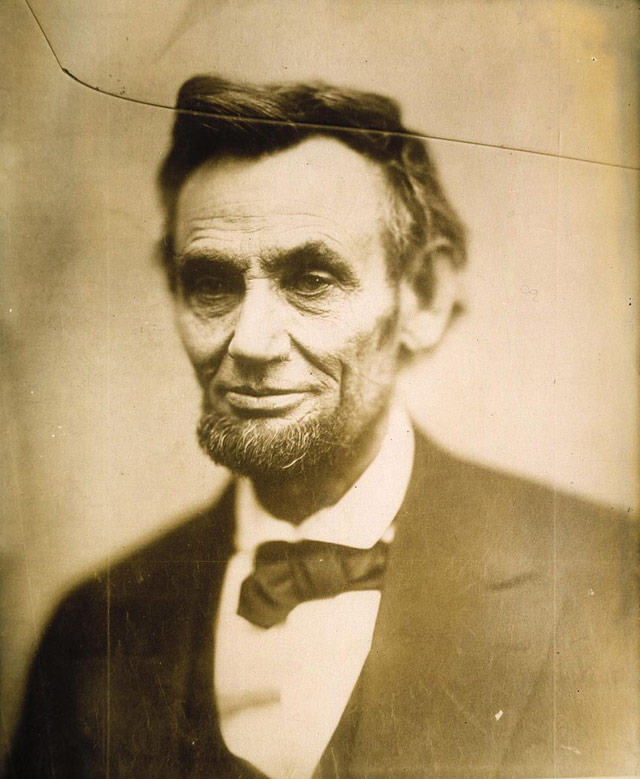Honest Abe’s photographs

Errol Morris is at it again, publishing book-length blog posts for the NY Times. This time, he’s examining the photograph evidence of Abraham Lincoln and, I think, what those photos might tell us about Lincoln’s death. Here’s the prologue and part one (of an eventual four).
My fascination with the dating and interpretation of photographs is really a fascination with the push-pull of history. Facts vs. beliefs. Our desire to know the origins of things vs. our desire to rework, to reconfigure the past to suit our own beliefs and predilections. Perhaps nothing better illustrates this than two radically different predispositions to objects — the storyteller vs. the collector.
For the collector the image with the crack [in one of Lincoln’s photographs] is a damaged piece of goods — the crack potentially undermining the value of the photograph as an artifact, a link to the past. The storyteller doesn’t care about the photograph’s condition, or its provenance, but about its thematic connections with events. To the storyteller, the crack is the beginning of a legend — the legend of a death foretold. The crack seems to anticipate the bullet fired into the back of Lincoln’s head at Ford’s Theater on Good Friday, April 14, 1865.
It should have a name. I call it “the proleptic crack.”





Stay Connected